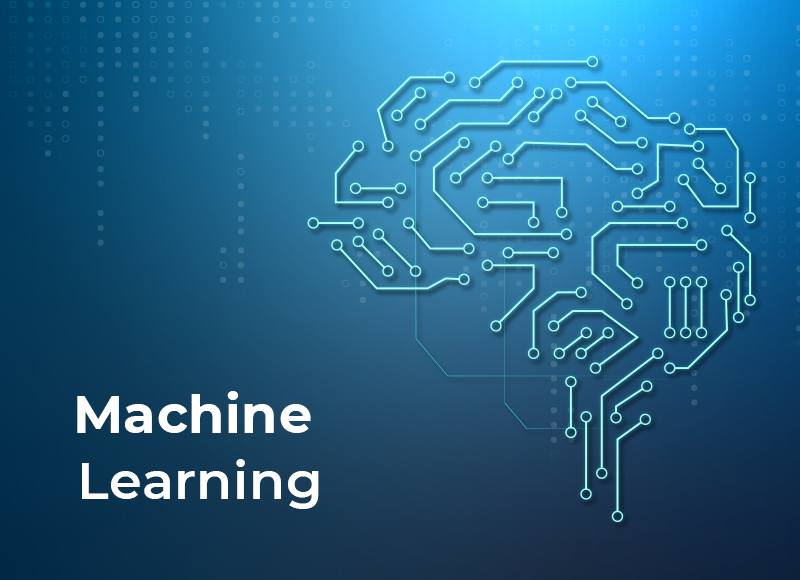Table of Contents
Are you curious about the role of machine learning in data analysis and ELT pipelines? This guide provides a detailed overview of the technology and its impact on the industry.

As the amount of data generated by businesses continues to grow, there is a need for efficient and effective ways to analyze this data. One solution is machine learning (ML), which can help automate parts of the data analysis process and improve accuracy.
In addition to improving data analysis, ML has also been useful in ELT pipelines - extract, transform, and load. By using ML algorithms within these pipelines, businesses can automatically clean and preprocess their data before it enters the analytics stage. This article will explore how ML is being used in both data analysis and ELT pipelines and discuss its benefits and limitations in each area.
Understanding Machine Learning And Its Applications
Machine learning is a subset of artificial intelligence that enables machines to learn from data without being explicitly programmed. It involves the use of algorithms and statistical models to analyze and identify patterns in large datasets, which can then be used for making predictions or decisions. Machine learning has numerous applications across various industries, including healthcare, finance, and marketing.

One key application of machine learning is in data analysis. With the explosion of big data over recent years, traditional methods of analyzing and processing data have become inadequate. Machine learning provides a solution by allowing organizations to extract insights from vast amounts of unstructured data quickly and accurately. By automating the process of discovering patterns within this data, organizations can gain valuable business insights that they may not have been able to uncover otherwise.
Another important area where machine learning plays a crucial role is in ELT (Extract-Load-Transform) pipelines. These pipelines are used for transferring data between different systems while transforming it into a format suitable for downstream analyses. Machine learning algorithms can help automate this process by identifying any errors or inconsistencies within the data as it moves through these pipelines, ensuring its accuracy and consistency throughout the entire process.
The Importance Of Data Analysis In Business
Data analysis is an essential part of any business strategy. It helps organizations make informed decisions, identify trends and patterns, and gain insights into customer behavior. By analyzing data, businesses can identify areas for improvement and opportunities to streamline operations.
One of the main benefits of data analysis is that it enables businesses to better understand their customers. Companies can identify buying patterns, preferences, and behaviors by analyzing customer data. This information can be used to create targeted marketing campaigns and improve product offerings. For example, a company might use Snowflake ETL data warehouse for analysis to determine which products are selling well and which ones are not. They could then adjust their inventory accordingly to optimize sales.

Another key benefit of data analysis is that it helps businesses stay competitive in today's fast-paced marketplace. With so much competition out there, companies need all the help they can get to gain an edge over their rivals. Data analytics provides valuable insights into market trends, competitor behavior, and consumer preferences – all critical pieces of information for staying ahead of the game.
Overall, data analysis plays a crucial role in modern business strategies. From identifying new opportunities to improving existing processes, it has become an indispensable tool for organizations looking to succeed in today's complex marketplace. As such, investing in robust data analysis capabilities should be a top priority for any business looking to thrive in the years ahead.
The Challenges Of Elt Pipelines And How Ml Can Help
After understanding the importance of data analysis in business, it's time to focus on the challenges faced during ELT pipelines. Extracting, transforming, and loading data requires a lot of manual effort, which can result in human errors. Moreover, these processes are time-consuming and may delay decision-making.
This is where machine learning comes into play. It automates most tasks involved in ELT pipelines, such as identifying anomalies or predicting trends by analyzing large datasets. Machine learning algorithms use statistical models to learn from historical data and improve their accuracy over time.
By incorporating ML in ELT pipelines, businesses can save time and resources while ensuring the accuracy and reliability of data analysis. However, implementing machine learning requires skilled professionals who can develop custom algorithms that fit specific business needs. With proper implementation, machine learning can revolutionize traditional ELT pipeline methods and enable businesses to make informed decisions quickly. If you wanna know about the Best ETl Tools, check the link mentioned!
Benefits Of Using Ml In Data Analysis
It's amazing how technology has revolutionized the way we live our lives. Machine learning is one such innovation that has transformed various industries, including data analysis. The benefits of using ML in data analysis are simply overwhelming.
Firstly, with machine learning algorithms, you can analyze vast amounts of complex data in minutes or hours instead of days or weeks. This saves time and resources for businesses that rely on timely insights to make critical decisions. By leveraging these algorithms, you can uncover hidden patterns and relationships within your datasets that would be impossible to identify manually.
Finally, perhaps the most significant benefit of using machine learning in data analysis is its ability to help organizations predict future trends accurately. By analyzing historical data points and identifying correlations between them, an organization can develop predictive models that enable it to anticipate market changes and adjust its strategies accordingly.
In conclusion, there’s no denying that machine learning has completely changed the game regarding data analysis. Its advantages go far beyond just saving time and money – they extend into predicting future trends with accuracy that was not possible before. Whether you’re running a small business or managing large-scale operations across multiple locations worldwide, incorporating machine learning into your ELT pipeline could be just what you need to stay ahead of the competition in today’s fast-paced digital landscape.
Benefits Of Using Ml In Elt Pipelines
Using machine learning in ELT pipelines has numerous benefits. Firstly, ML algorithms can help improve the accuracy and efficiency of data extraction, transformation, and loading processes. This is because they can identify patterns and predict outcomes based on large datasets, which would otherwise be difficult to achieve manually.
Secondly, incorporating ML models into ELT pipelines enables automated decision-making based on real-time data analysis. For instance, a predictive model can alert stakeholders when certain conditions are met or provide recommendations for optimizing business operations. This helps organizations make informed decisions faster and more accurately.
Lastly, ML-powered ELT pipelines allow businesses to easily scale up their data processing capabilities. As organizational needs evolve over time, traditional methods may not suffice; however, by automating complex tasks using sophisticated algorithms and frameworks like TensorFlow or PyTorch, businesses can keep pace with growing demands while maintaining quality standards.
By leveraging machine learning in ELT pipelines, businesses can gain a competitive edge through optimized workflows that enable better decision-making and scalability. With these benefits in mind, it's clear why many companies are adopting this approach to stay ahead of the curve in today's fast-paced digital landscape.
Limitations And Future Directions Of Ml In Data Analysis And Elt Pipelines
Some limitations of machine learning in data analysis and ELT pipelines include the need for large amounts of labeled data, potential bias in algorithmic decision-making, and difficulty in interpreting results. In order to train a model effectively, it requires significant amounts of both relevant and diverse data. This can be a challenge when working with smaller datasets or less common variables.
Another limitation is the potential for bias in algorithmic decision-making. If the training dataset contains biases or certain groups are underrepresented in the data, then the resulting models may also reflect those biases. Additionally, even without explicit bias present in the training data, algorithms may still produce biased outcomes due to other factors, such as imbalanced class distributions or correlations between input features.
Looking toward future directions, one area where machine learning could significantly impact is addressing these challenges around interpretability and transparency. By providing more tools for visualizing and understanding how models work, researchers and practitioners alike would have an easier time identifying issues like overfitting or unexpected correlations that might not otherwise be apparent from just looking at the raw output. Furthermore, by making models more interpretable, we could also help build trust with end-users who might otherwise be hesitant to rely on automated systems for critical decisions.
Conclusion
Using machine learning in data analysis and ELT pipelines has proven invaluable for businesses. The ability to accurately analyze large amounts of data and automatically extract insights can lead to improved decision-making and increased efficiency.
While there are limitations and challenges associated with implementing ML in these processes, such as ensuring data quality and avoiding bias, the benefits far outweigh the drawbacks. As technology evolves and improves, we will likely see even more innovative ways machine learning can enhance data analysis and ELT pipelines. Overall, embracing ML is crucial for any business looking to stay competitive in today's rapidly changing landscape.
Recent Blogs
Stop Building from Scratch: Boost Your Marketing Funnel with App Templates
-
13 Jan 2026
-
10 Min
-
173








